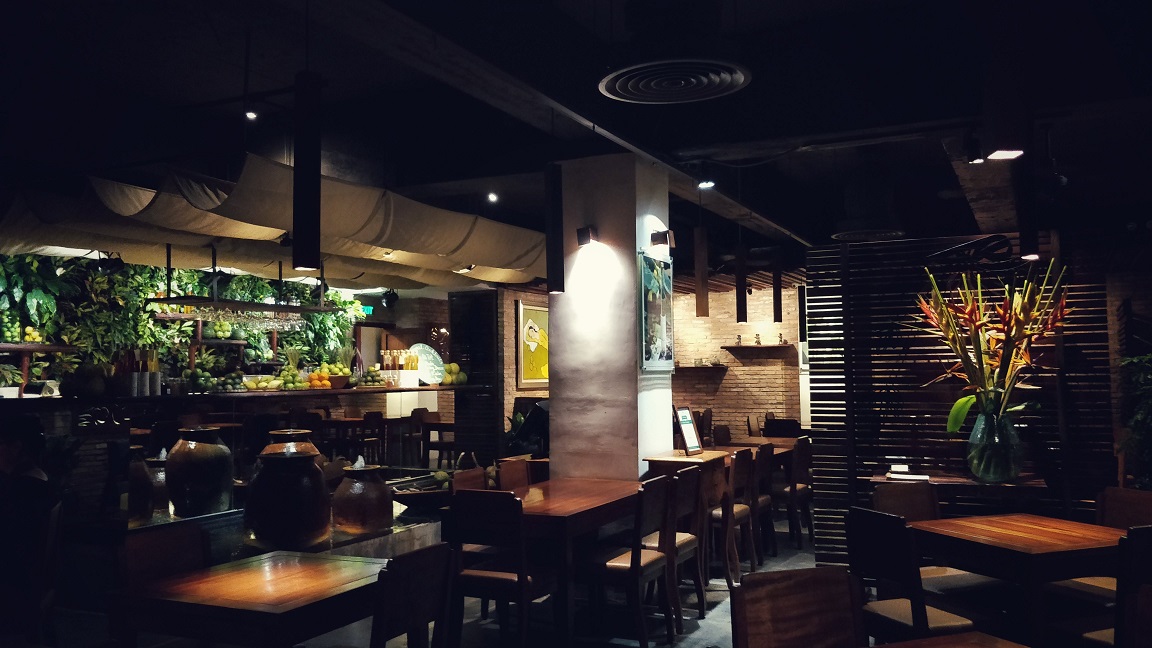Chinese Food Islamabad: Appreciate Genuine Chinese Food at its Best
Chinese Food Islamabad: Appreciate Genuine Chinese Food at its Best
Blog Article
Savor Genuine Asian Food With a Pan-Asian Spin for a Cooking Adventure
Beginning on a cooking trip through authentic Eastern food, enhanced with a Pan-Asian twist, offers an unique chance to discover the rich tapestry of tastes that define the area's diverse cooking customs. This experience invites you to appreciate the elegant balance of tastes-- sweet, salty, spicy, and sour-- harmonized by aromatic herbs and spices. Think of the ingenious combination of Thai curry and ramen or the unanticipated joy of sushi burritos. As you contemplate these tempting recipes, consider the social stories and historic impacts that form them, each bite supplying a tale waiting to be discovered.

Checking Out Pan-Asian Tastes
In the realm of international gastronomy, Pan-Asian cuisine attracts attention for its impressive diversity and the harmonious interaction of flavors from numerous Asian societies. This culinary strategy celebrates the rich practices and distinct active ingredients located across the continent, developing a tapestry of tastes that is both satisfying and fascinating. Key to Pan-Asian food is its ability to stabilize different tastes-- sweet, salted, spicy, and sour-- while highlighting the freshness and high quality of each ingredient.
From the umami-rich soy sauce of Japan to the fiery chili peppers of Thailand, Pan-Asian food offers an extensive combination of tastes. These elements are usually integrated in creative ways, boosting recipes with layers of complexity. For example, making use of aromatic natural herbs such as lemongrass and cilantro, common in Vietnamese and Thai food, adds a rejuvenating illumination to recipes, while the consolidation of coconut milk delivers a luscious, abundant appearance.
The focus on fresh produce and fragrant seasonings makes sure that each meal is not only a feast for the palate yet additionally for the senses. Pan-Asian cuisine invites diners to start a culinary journey, checking out the substantial and differed landscapes of Asian gastronomy with every bite.
Fusion Dishes to Try
While Pan-Asian cuisine is commemorated for its standard flavors, the modern-day culinary landscape is progressively embracing blend recipes that blend these classic components with influences from other areas. This ingenious method not just honors the abundant heritage of Asian cooking arts but also presents novel preference experiences that appeal to modern palates.
An archetype of such a fusion recipe is the Korean-Mexican taco, where marinaded bulgogi beef is covered in a warm tortilla, covered with kimchi and a spicy gochujang-infused salsa. This mix marries the vibrant, mouthwatering tastes of Korea with the lively, fresh elements of Mexican food. Similarly, sushi burritos have actually gotten popularity, integrating the fragile artistry of Japanese sushi with the hearty, hand-held ease of a burrito, commonly featuring combination active ingredients like tempura shrimp and avocado with a drizzle of wasabi mayo.
One more significant dish is Thai curry ramen, which infuses the luscious, fragrant flavors of Thai curry right into the comforting broth of traditional Japanese ramen, developing a harmonious blend that tantalizes the detects. These blend dishes prolong past mere novelty; they represent a cooking dialogue between cultures, urging exploration and technology in the world of Pan-Asian food.
Important Active Ingredients and Spices
To truly appreciate Pan-Asian food, one should recognize the vital ingredients and spices that develop its foundation. This varied culinary style draws from a rich tapestry of Oriental customs, using an unified mix of structures and flavors. Secret active ingredients consist of soy sauce, fish sauce, and oyster sauce, which impart a full-flavored umami depth vital to Oriental dishes. Complementary to these are rice vinegar and mirin, lending a fragile level of acidity and sweet taste.
Fragrant aspects are critical, with ginger, lemongrass, and garlic being common across different Pan-Asian recipes. These ingredients give an aromatic base that improves the complexity of flavors. Flavors such as star anise, cardamom, and cinnamon present heat and personality, resembling influences from regions like China and India.

Cooking Techniques and Tips
Mastering the art of Pan-Asian cuisine needs knowledge with its distinct cooking strategies, each adding to pop over to these guys the dynamic tapestry of tastes this culinary custom is commemorated for. Central to these methods is the stir-fry, a quick cooking technique that maintains the dietary stability and brilliant shades of ingredients. Utilizing a wok, the stir-fry technique enables also heat circulation, crucial for achieving the characteristic texture and flavor equilibrium of Pan-Asian meals.
One more essential technique is steaming, particularly common in Chinese cuisine. This mild technique keeps the natural tastes and nutrients of ingredients, making it suitable for seafood and vegetables. Dumplings, a beloved staple, typically take advantage of steaming, resulting in soft, succulent textures.
Cooking, likewise indispensable, imparts great smoky midsts to recipes such as Korean bulgogi or Japanese yakitori (asian restaurant isb). This method commonly involves seasoning components, enabling flavors to penetrate deeply before cooking over an open fire or warmer
Last but not least, mastering the art of stabilizing flavors-- wonderful, sour, salty, bitter, and umami-- is essential. Appropriately layering these elements can raise a dish from common to phenomenal, using a complex and pleasing culinary experience that embodies the essence of Pan-Asian food.
Eating Experiences Worldwide
Around the world, Pan-Asian cuisine supplies an unequaled dining experience, celebrated for its rich tapestry of tastes and vibrant discussions. This culinary phenomenon has actually gone beyond social limits, catching the hearts and tastes buds of food fanatics worldwide. In cosmopolitan cities like New York, London, and Sydney, Pan-Asian dining establishments act as fusions where culinary traditions from Thailand, Japan, China, and past merge, giving restaurants with a diverse mix of recipes that highlight the region's diversity.
The international charm of Pan-Asian cuisine hinges on its capacity to supply both credibility and innovation. Cooks skillfully wed typical active ingredients such as lemongrass, soy sauce, and miso with modern techniques, resulting in recipes that are both acquainted and refreshingly brand-new. This blend enables diners to start a cooking trip that appreciates heritage while accepting modernity.
In addition, dining experiences are elevated with thoughtfully created atmospheres that show the values of Pan-Asian looks. From minimal Japanese-inspired insides to lively Thai-themed areas, each restaurant provides a distinct atmosphere that complements the culinary offerings. As an outcome, clients are not simply taking in a dish but partaking in a cultural experience, making Pan-Asian dining a really international sensation.
Final Thought
The exploration of Pan-Asian cuisine provides a profound understanding of the intricate interaction of flavors and culinary practices throughout Asia. By get more accepting fusion recipes such as Thai curry ramen and sushi burritos, the cooking journey not only highlights the flexibility of standard components but additionally showcases ingenious contemporary strategies. This gastronomic experience, enhanced by important spices and cooking approaches, supplies a distinct opportunity to value the cultural variety and cooking artistry that specify Pan-Asian cuisine on an international scale.
Beginning on a cooking trip through genuine Oriental food, boosted with a Pan-Asian spin, provides an one-of-a-kind chance to explore the abundant tapestry of flavors that specify the region's varied cooking customs.In the world of worldwide gastronomy, Pan-Asian food stands out for its amazing variety and the harmonious interaction of tastes from various Eastern cultures. Key to Pan-Asian cuisine is its capacity to balance different tastes-- wonderful, salted, spicy, and sour-- while highlighting the freshness and high quality of each ingredient.

Report this page